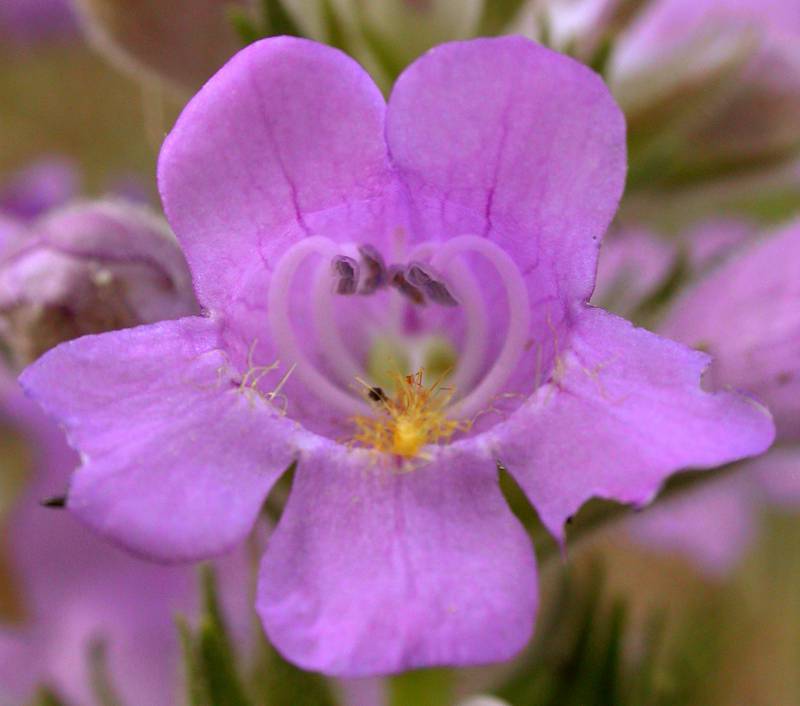Penstemon ovatus
Penstemon eriantherus
egg-leaf beardtongue, broad-leaved penstemon
crested-tongue penstemon, fuzzy-tongue penstemon
Basal leaves opposite, clustered, petiolate, with ovate to sub-cordate blade up to 10 cm. long and half as wide, about equaling the petiole, serrate, hairy like the stem, especially along the mid-vein beneath;
cauline leaves sessile and clasping, more sharply serrate, nearly as large, but more broadly oblong, the upper ovate.
Leaves opposite, entire or with a few teeth, up to 13 cm. long and 2 cm. wide.
Inflorescence large and open, strongly glandular-hairy;
calyx 3-5 mm. long, broadly lanceolate, with parallel veins;
corolla blue, 15-22 mm. long, glandular-hairy on the outside, the raised portion of the lower petal pale blue and hairy;
corolla strongly bilabiate, the lower lip much the longer;
pollen sacs 0.8-1.1 mm. long, fully dehiscent and becoming opposite, nearly glabrous;
staminode bearded toward the recurved tip.
Inflorescence of several verticillasters;
calyx elongate, 7-13 mm. long, the 5 segments narrowly lanceolate, wholly herbaceous;
corolla covered with stalked glands, lavender to reddish-purple or deep bluish-purple, 2-4 cm. long, inflated, 6-14 mm. wide at the mouth, the lower lip the longer; raised portion of the lower lip strongly bearded;
pollen sacs glabrous, 1.1-1.8 mm. long, wholly dehiscent, becoming opposite;
staminode exerted, the tip slightly expanded, long-bearded most of its length;
ovary glandular-puberulent near the tip.
Capsule 4-6 mm. long.
Capsule 7-12 mm. long.
Penstemon ovatus
Penstemon eriantherus
- Local floras:
BC,
OR,
WA
- Local Web sites:
Flora NW,
PNW Herbaria
WildflowerSearch
iNaturalist (observations)
USDA Plants Database
- LBJ Wildflower Center
- SEINet
- Plants of the World Online
- Encyclopedia of Life
- Wikipedia
- Google Image Search



